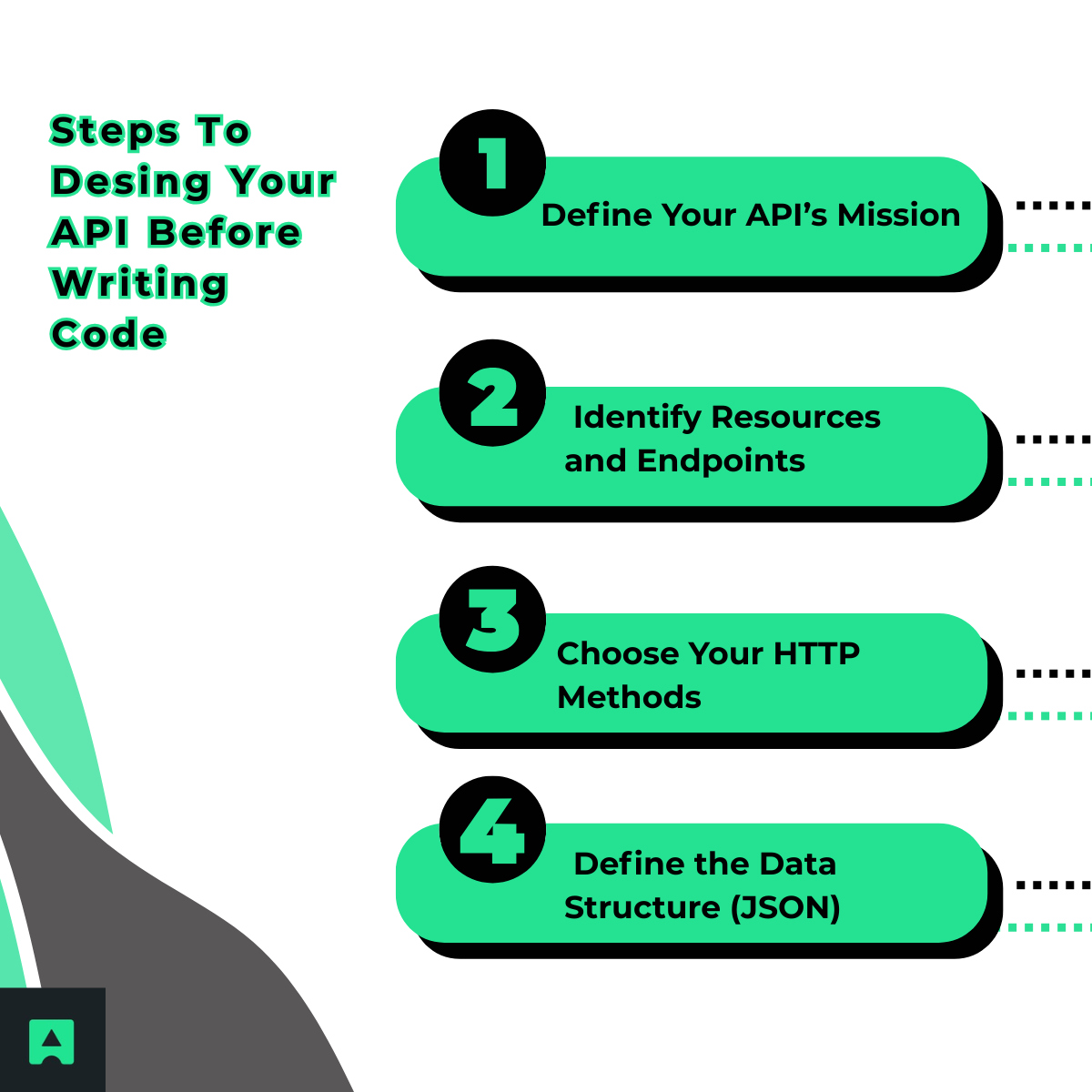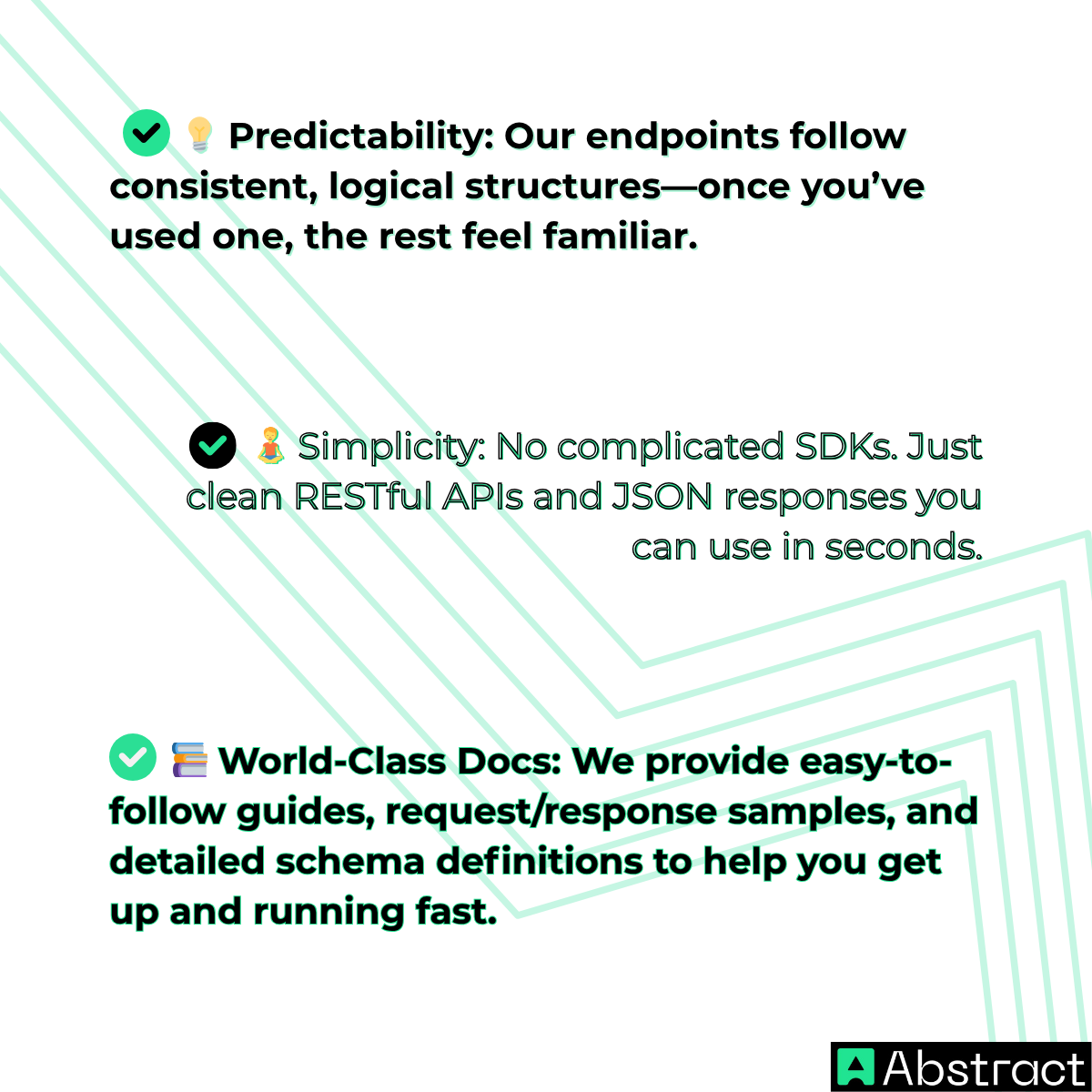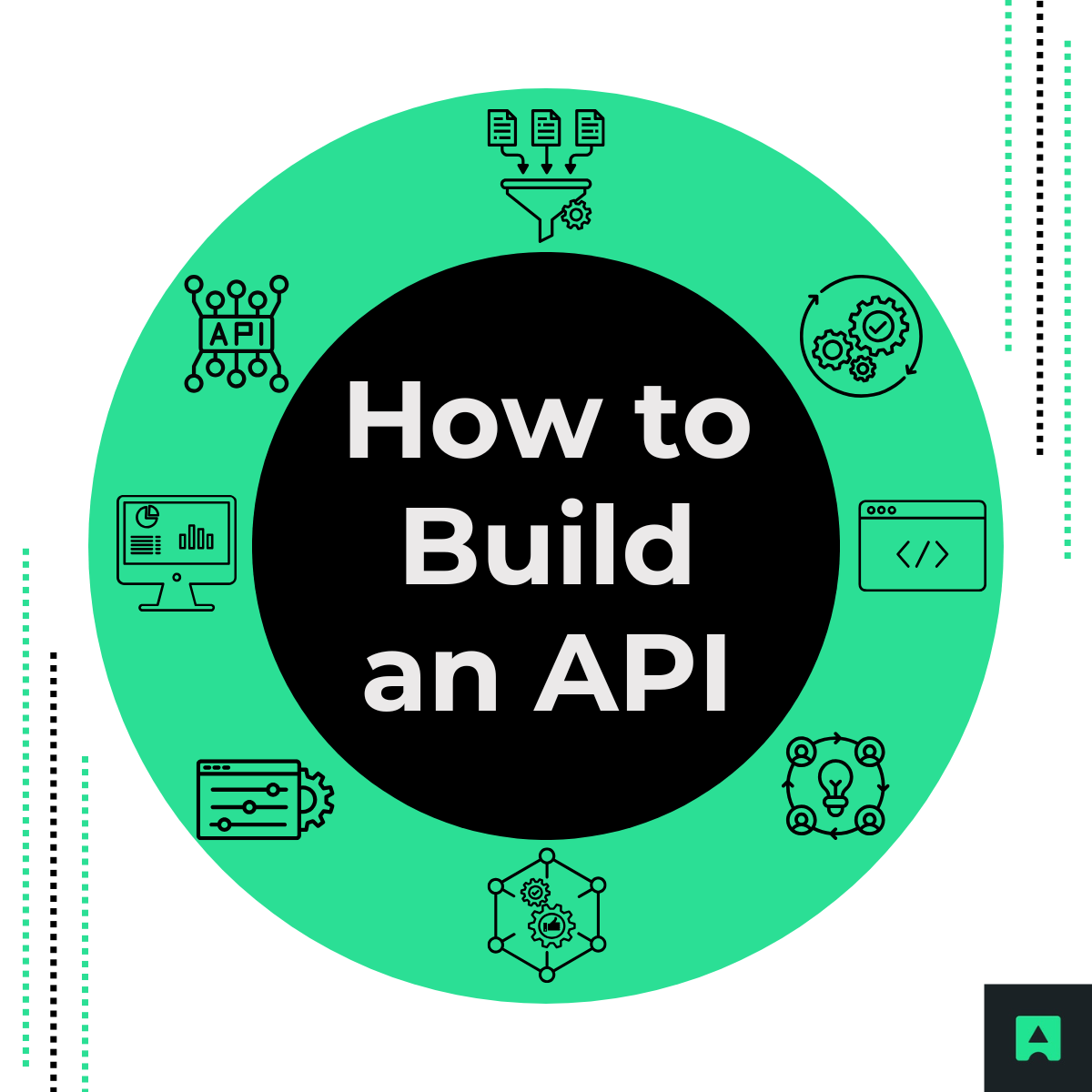🧠 Section 1: The Blueprint — Designing Your API Before Writing Code
Before jumping into code, it's essential to start with a solid plan. Thoughtful design makes implementation smoother, improves usability, and reduces bugs and rewrites later.

✅ Step 1: Define Your API’s Mission
Every successful API starts by solving a specific problem. Don’t try to build a giant platform from day one—begin with a focused use case.
Example: Let’s imagine you're creating an API for a simple event planner. Your API will allow users to manage a list of upcoming events—create them, list them, and delete them.
📌 Step 2: Identify Resources and Endpoints
RESTful APIs revolve around resources—the entities your API manages. Think of these as the “nouns” of your system.
In our case, the main resource is events.
Endpoints are the URLs used to interact with these resources. A few basic examples might include:
- GET /events – Retrieve all events
- POST /events – Create a new event
- DELETE /events/{id} – Delete a specific event by ID
🛠 Step 3: Choose Your HTTP Methods
These are your "verbs"—the actions a user can perform on each resource:
- GET – Fetch data
- POST – Add new data
- PUT or PATCH – Modify existing data
- DELETE – Remove data
You’ll combine these with your endpoints to describe the available interactions.
🧾 Step 4: Define the Data Structure (JSON)
APIs typically communicate using JSON. You’ll need to decide what your data will look like.
Here’s a possible JSON representation of a single event:
{
"id": 1,
"title": "Team Meeting",
"date": "2025-09-01T10:00:00Z",
"location": "Conference Room A"
}
📍 Pro tip: Keep your structure consistent—it helps developers (including future-you) work with the API more easily.
🧰 Section 2: Choosing Your Toolkit — Selecting Your Tech Stack
Once your design is ready, it’s time to pick the tools that will bring your API to life. Here are the core components:
💻 Programming Language & Framework
This is the engine that powers your API logic.
- Node.js + Express.js is a fantastic choice for beginners. It’s lightweight, widely used, and has a huge community.
- Python with Flask or FastAPI is another excellent alternative, especially for developers who prefer Python’s simplicity.
🗃 Database
You’ll need a place to store your data.
- PostgreSQL is a popular relational database great for structured data with defined relationships.
- MongoDB is a document-based, NoSQL database ideal for flexible, unstructured data.
🧪 API Testing Tools
Before you build a frontend, you’ll want to test your API endpoints.
- Postman and Insomnia allow you to send requests to your API, examine responses, and debug issues—all through an intuitive interface.
🔨 Section 3: The Core Build — Creating Your First API with Node.js & Express
Let’s build a simple API step-by-step using Node.js and Express.
⚙️ Make sure Node.js and npm are installed before proceeding.
🛠 Step 1: Initialize Your Project
mkdir event-api
cd event-api
npm init -y
npm install express
🌐 Step 2: Create a Basic Server
Create a file named index.js:
const express = require('express');
const app = express();
const PORT = 3000;
app.use(express.json());
app.get('/', (req, res) => {
res.send('Welcome to the Event API!');
});
app.listen(PORT, () => {
console.log(`Server is running on http://localhost:${PORT}`);
});
Then run: node index.js
📥 Step 3: Add a GET /events Endpoint
let events = [
{ id: 1, title: 'Conference', date: '2025-09-10', location: 'Main Hall' },
{ id: 2, title: 'Workshop', date: '2025-09-15', location: 'Room B' }
];
app.get('/events', (req, res) => {
res.json(events);
});
➕ Step 4: Handle POST /events to Add Events
app.post('/events', (req, res) => {
const newEvent = {
id: events.length + 1,
title: req.body.title,
date: req.body.date,
location: req.body.location
};
events.push(newEvent);
res.status(201).json(newEvent);
});
🗑 Step 5: Add DELETE /events/:id
app.delete('/events/:id', (req, res) => {
const eventId = parseInt(req.params.id);
events = events.filter(event => event.id !== eventId);
res.status(204).send();
});
- 🎉 Boom! You’ve now created your first REST API!
🏆 Section 4: From Working to World-Class — API Best Practices
✅ 1. Use the Right Status Codes
Use specific HTTP status codes to improve clarity:
- 201 Created – A new resource was added
- 400 Bad Request – The request was invalid
- 404 Not Found – The resource doesn’t exist
- 500 Internal Server Error – Something broke on the server
🔤 2. Consistent Naming
Stick with plural resource names:
✅ /events
❌ /event
📁 3. Version Your API
Use versioning to prevent breaking changes later: /api/v1/events
🔐 4. Think About Security
Add authentication—even a simple API key system can protect your endpoints from unauthorized access.
🌟 Section 5: The AbstractAPI Philosophy — What Makes a Great API
At AbstractAPI, we know that building APIs is more than just writing code—it’s about creating a smooth, developer-centric experience.
Here’s what we believe in:

Want to explore APIs that practice what we preach?
👉 https://www.abstractapi.com/api
Conclusion
Let’s recap what you’ve learned:
- How to plan and design an API
- How to build it with Node.js & Express
- How to implement best practices for naming, versioning, and error handling
- How AbstractAPI approaches API design with a developer-first mindset
🎯 You now have the tools and understanding to build your own APIs.

Every great developer starts with a small project—this is your launchpad. As you explore further, analyze real-world APIs and pay attention to what makes them intuitive and powerful.
📢 Take the next step: Browse the AbstractAPI library to see clean, production-ready APIs in action.




